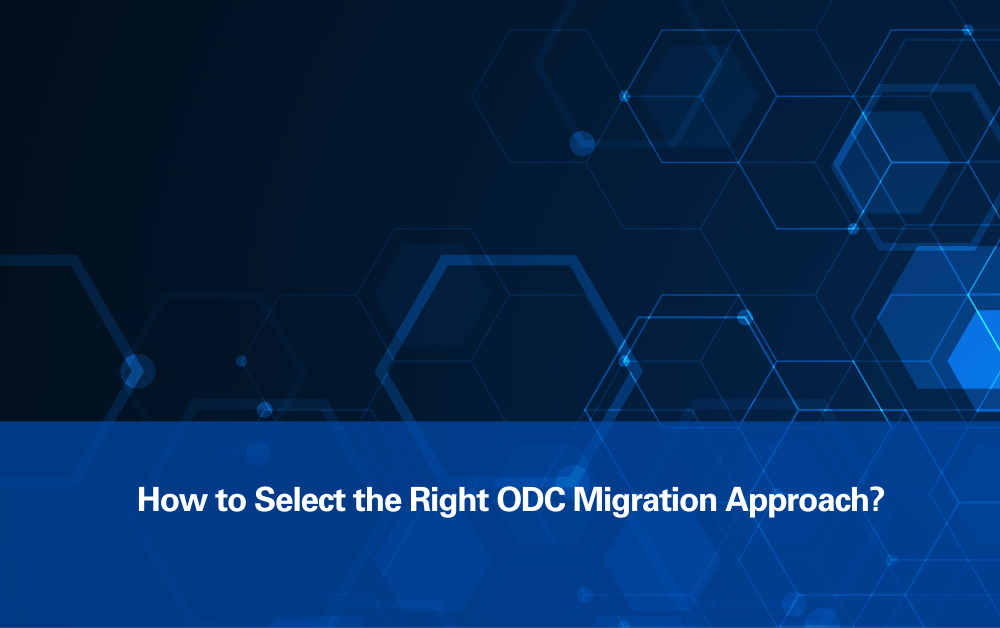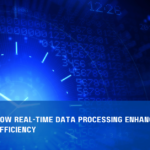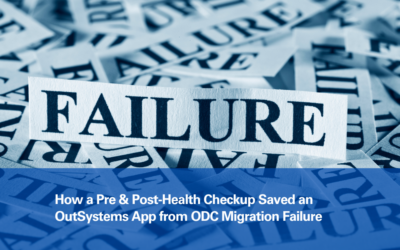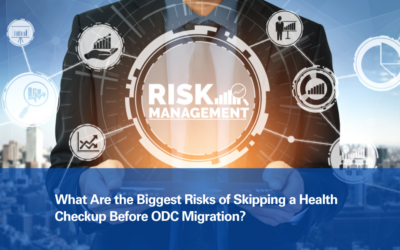When it comes to migrating to OutSystems Developer Cloud (ODC), the approach you choose can have a big impact on the success of your transition. A good strategy can minimize disruptions, reduce risks, and ensure your systems are ready for the future.
But how do you choose the right migration approach? This blog will guide you through key strategies to consider, their pros and cons, and tips to help you make the best decision for your organization.
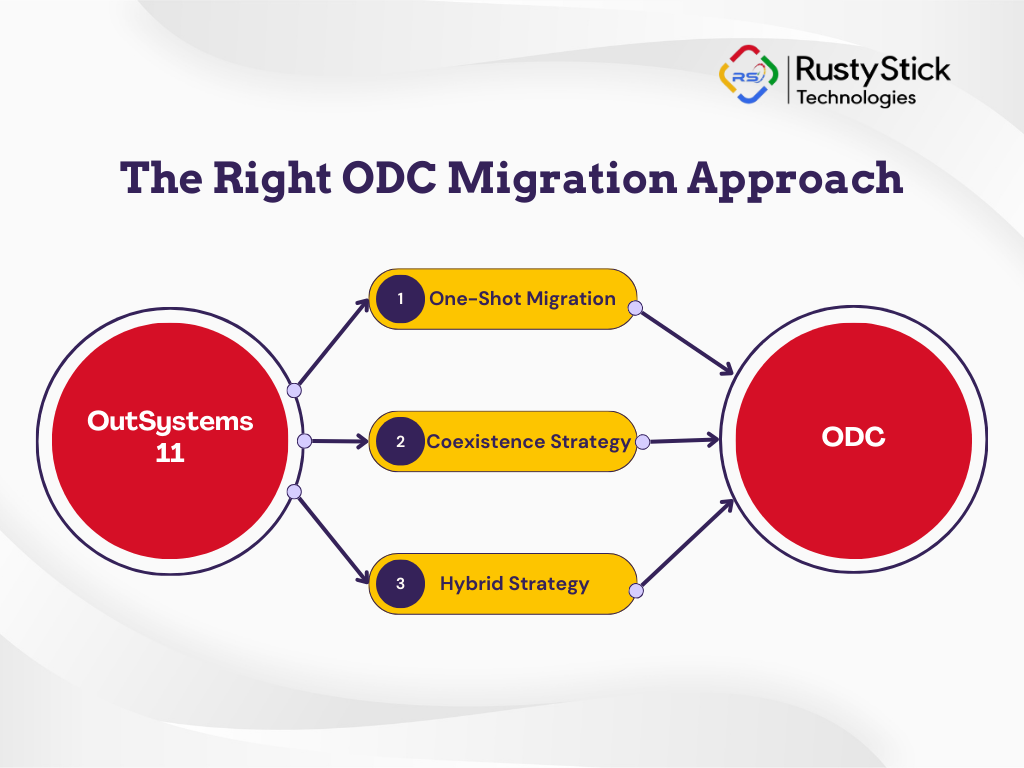
2. Why ODC Migration Requires the Right Strategy
Migrating to ODC is more than just moving your applications; it’s about aligning with a new architecture that promotes scalability, flexibility, and better lifecycle management. However, without the right approach, you risk delays, data inconsistencies, or even critical disruptions.
Key reasons to plan your approach:
- Complexity of Systems: Larger or more integrated systems require careful handling.
- Business Continuity: Ensuring minimal disruption during the migration process.
- Team Adaptability: Allowing teams to adjust to ODC’s new processes and architecture.
3. Key Migration Strategies
1️⃣ One-Shot Migration
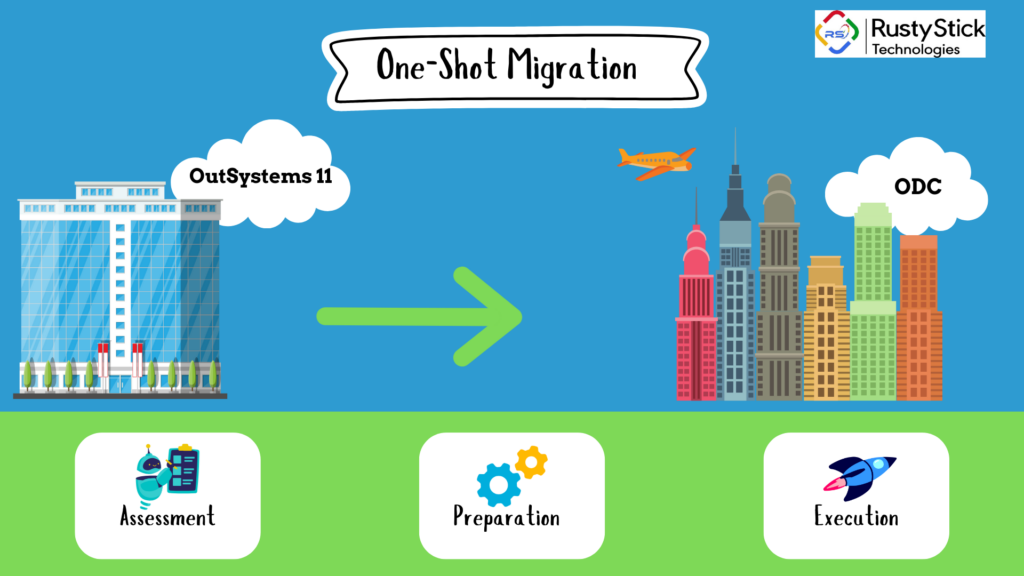
This strategy involves moving all your applications to ODC in a single step. Think of it as flipping a switch—your entire system is transitioned at once.
- When to Choose It:
- You have a simple portfolio with few applications.
- Your systems don’t have deep integrations with external systems or legacy databases.
- You want to minimize the timeline for migration.
- You have a simple portfolio with few applications.
- How It Works:
- Perform a detailed assessment of your applications to identify any blockers.
- Prepare your team to handle potential issues during the switch.
- Plan for a system-wide downtime during the migration, as this process is often done over a single weekend or holiday period.
- Perform a detailed assessment of your applications to identify any blockers.
- Pros:
- Faster migration since it happens all at once.
- Easier to maintain consistency across all systems post-migration.
- Faster migration since it happens all at once.
- Cons:
- Higher risks of disruption if there are unexpected issues.
- Limited time for testing and troubleshooting during the process.
- Higher risks of disruption if there are unexpected issues.
2️⃣ Coexistence Strategy
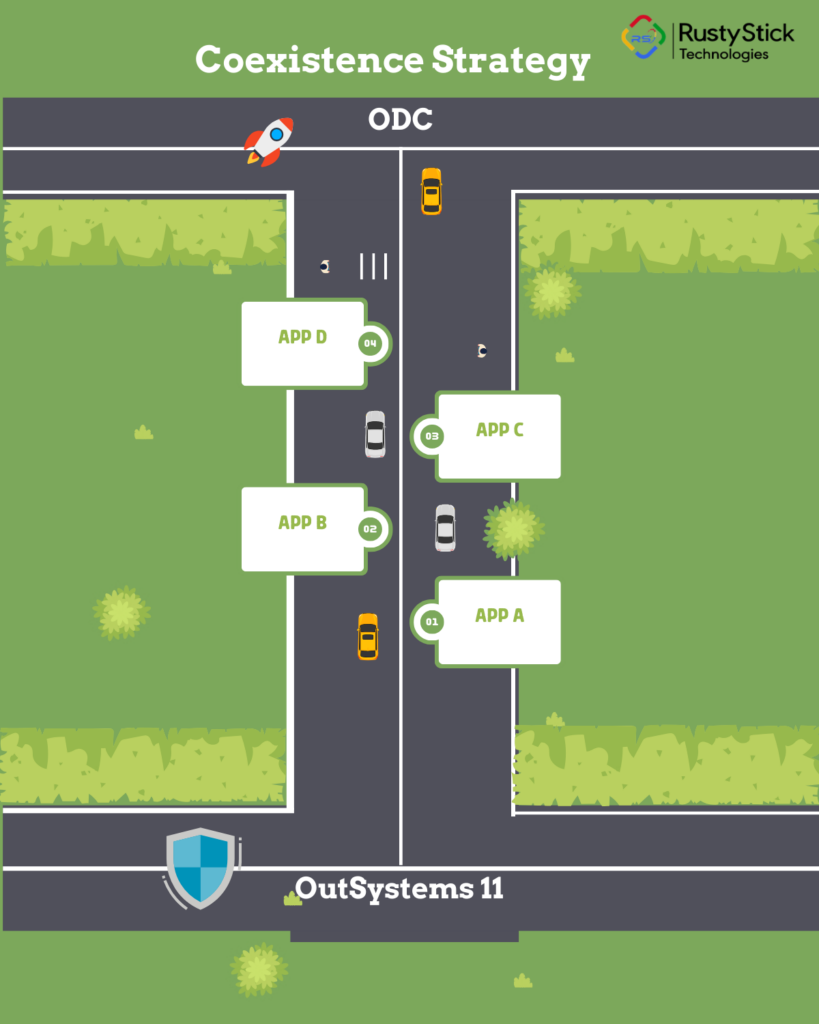
This phased approach allows OutSystems 11 (OS11) and ODC to run simultaneously while applications are migrated one at a time. It’s like building a bridge—you can cross over in parts without leaving anything behind.
- When to Choose It:
- Your organization has critical applications that need stability during the migration.
- You want to minimize risks and disruptions by gradually transitioning applications.
- Your teams need time to adapt to ODC’s architecture and processes.
- Your organization has critical applications that need stability during the migration.
- How It Works:
- Identify and prioritize which applications will move to ODC first.
- Maintain data and integrations between OS11 and ODC during the coexistence period.
- Gradually redirect users to ODC applications as they are completed.
- Identify and prioritize which applications will move to ODC first.
- Benefits:
- Lower risk of system-wide disruptions.
- Allows thorough testing and optimization for each migrated application.
- Provides time for training and onboarding teams.
- Lower risk of system-wide disruptions.
- Challenges:
- Requires more effort to maintain both OS11 and ODC systems temporarily.
- Dependencies between applications might need to be carefully managed.
- Requires more effort to maintain both OS11 and ODC systems temporarily.
3️⃣ Hybrid Strategy
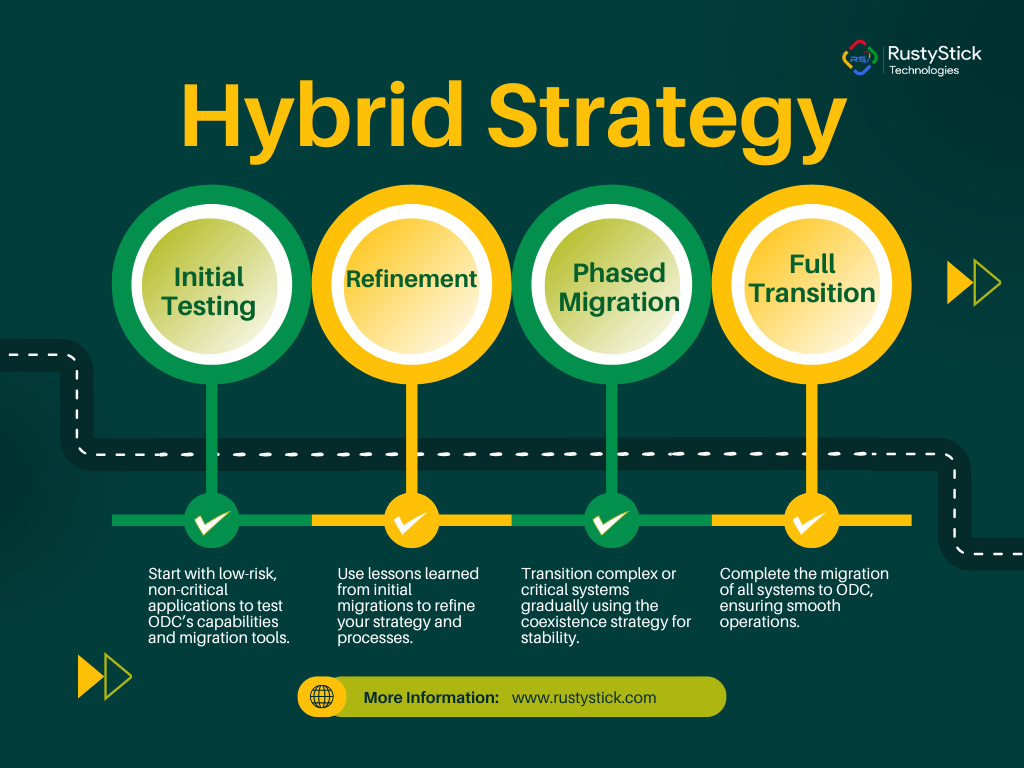
The hybrid approach combines the strengths of the one-shot and coexistence strategies. It involves starting with non-critical applications to test the process, followed by a phased coexistence migration for complex or high-priority systems.
- When to Choose It:
- Your organization has a mix of simple and complex applications.
- You want to test the migration process before fully committing.
- Minimizing disruptions for critical applications is a top priority.
- Your organization has a mix of simple and complex applications.
- How It Works:
- Begin with low-risk, non-critical applications to test ODC’s capabilities and migration tools.
- Use lessons learned from these migrations to refine your strategy.
- Transition critical systems using the coexistence strategy for maximum stability.
- Begin with low-risk, non-critical applications to test ODC’s capabilities and migration tools.
- Why It Works:
- It provides flexibility to test and adapt without risking critical systems.
- Balances speed and caution, ensuring a smoother transition overall.
- It provides flexibility to test and adapt without risking critical systems.
4. How to Choose the Right Approach
Selecting the best migration strategy depends on understanding your organization’s needs and constraints. Here’s a checklist to guide your decision-making process:
1️⃣ Assess Your Application Portfolio
- Complexity: Are your applications standalone or highly integrated?
- Simple Portfolio: One-shot migration may work.
- Complex Portfolio: Coexistence or hybrid strategies are better suited.
- Simple Portfolio: One-shot migration may work.
- Criticality: Which applications are business-critical and can’t afford downtime?
- Critical apps often require phased migration for stability.
Action Point: Create a list of applications with their dependencies, complexity, and business importance.
2️⃣ Evaluate Team Expertise and Resources
- Skill Level: Does your team understand ODC architecture and tools?
- If not, opt for a phased or hybrid strategy to allow training.
- If not, opt for a phased or hybrid strategy to allow training.
- Resource Availability: Do you have enough team members to handle parallel systems during coexistence?
- Running OS11 and ODC side by side requires additional resources.
Action Point: Plan training sessions and allocate resources for migration and testing.
3️⃣ Factor in Business Timelines
- Urgency: Are there strict deadlines to move to ODC?
- Tight deadlines may favor one-shot migration for simple systems.
- Tight deadlines may favor one-shot migration for simple systems.
- Disruption Tolerance: Can your business handle short-term disruptions?
- If not, phased coexistence is safer.
Action Point: Align the migration approach with your business calendar to avoid disruptions during peak periods.
4️⃣ Define Success Criteria
- What Does Success Look Like?
- Seamless migration with no critical downtime?
- Full team readiness for ODC architecture?
- Stable coexistence between OS11 and ODC during the transition?
- Seamless migration with no critical downtime?
- Action Point: Document clear goals for each migration stage and measure progress against them.
5. Common Pitfalls to Avoid
Here are some mistakes to watch out for:
- Skipping Assessment: Not evaluating your current applications and dependencies can lead to missed challenges.
- Underestimating Testing: Lack of thorough testing can cause critical failures post-migration.
- Overlooking Training: Ensure your teams are well-versed in ODC concepts to avoid inefficiencies during migration.
ODC migration isn’t a one-size-fits-all process. Choosing the right approach depends on your system’s complexity, business needs, and available resources. Planning and assessment are key to a successful transition, whether you opt for a one-shot migration, coexistence, or a hybrid approach.
Remember, it’s not just about moving your applications—it’s about ensuring they’re future-ready for your organization’s evolving needs.

